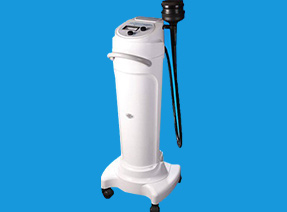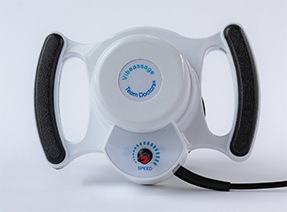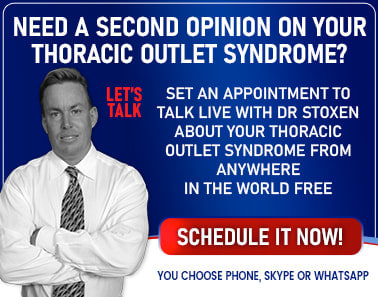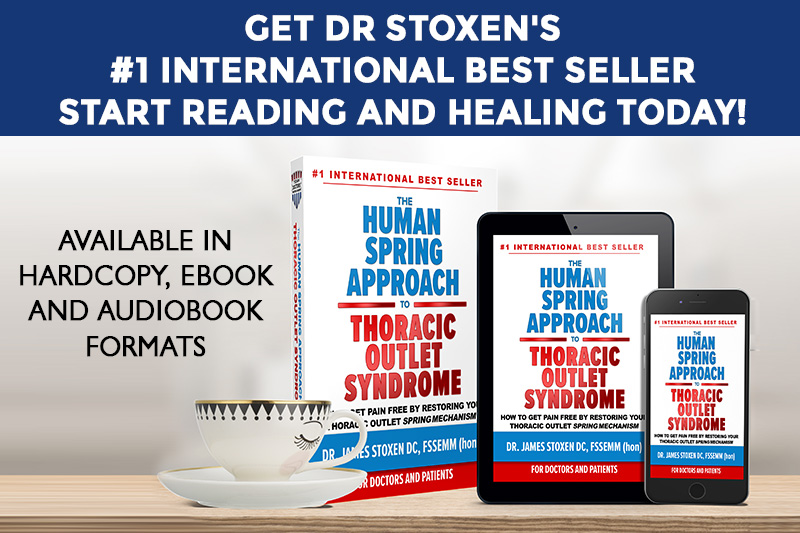THE HUMAN SPRING APPROACH TO
THORACIC OUTLET SYNDROME
by Dr James Stoxen DC., FSSEMM (hon) FWSSEM
GLOSSARY
C
calcium deposits – the deposit of calcium salts, mostly calcium phosphate, in body tissues.
cardiac pacemaker – cardiac pacemaker a small mass of specialized muscle tissue in the heart that sets a rhythm of contraction and relaxation for the other parts of the heart, resulting in the heartbeat.
cardiac pacemaker (artificial) – a medical device that generates electrical impulses delivered by electrodes to contract the heart muscles and regulates the electrical conduction system of the heart.
cardio thoracic outlet syndrome – there is no such thing as cardio thoracic outlet syndrome
carotid sinus – the reflex area of the carotid artery, consisting of various nerve receptors for baroregulation (pressure regulation of the body in sync to external conditions).
Carotid Sinus Hypersensitivity (CSH) – an exaggerated response to carotid sinus baroreceptor stimulation. It is defined by the response to gentle carotid sinus massage applied just below the angle of the jaw, near the carotid bifurcation for between 5 and 10 seconds.
carotid sinus hypersensitivity CSH – is an exaggerated response to carotid sinus baroreceptor stimulation.
carpal tunnel – the space beneath the flexor retinaculum of the wrist and the carpal bones, through which the median nerve and the flexor tendons of the fingers and thumb pass.
carpal tunnel release – surgery to treat carpal tunnel syndrome.
carpal tunnel surgery recovery time – The recovery from carpal tunnel surgery takes time – anywhere from several weeks to several months. If the nerve has been compressed for a long period of time, recovery may take even longer.
carpal tunnel symptoms – pain, numbness and tingling in the thumb, index finger, middle finger and the thumb side of the ring fingers.
carpal tunnel syndrome – what is carpal tunnel syndrome? It is a medical condition due to compression of the median nerve as it travels through the wrist at the carpal tunnel. The main symptoms are pain, numbness, and tingling, in the thumb, index finger, middle finger, and the thumb side of the ring fingers.
carpal tunnel treatment – treatment to remove the compression from the carpal tunnel of the wrist
catheter – is a thin tube made from medical grade materials inserted in the body to treat diseases by adding or removing fluids from the body.
catheter directed thrombolytic therapy – a method to treat vascular blockages by inserting a catheter in the blood vessel and injecting clot busters into the blood to improve blood flow by dissolving abnormal blood clots.
center of gravity – he place in a system or body where the weight is evenly dispersed and all sides are in balance.
center of mass – the exact center of your body, where every particle of your body’s mass or weight is equally distributed in all directions.
central nervous system – the complex of nerve tissues that controls the activities of the body. In vertebrates it comprises the brain and spinal cord.
cerebral contusion (head contusion)- form of traumatic brain injury, is a bruise of the brain tissue.
cerebral cortex – the largest region of the cerebrum in the mammalian brain and plays a key role in memory, attention, perception, cognition, awareness, thought, language, and consciousness. The cerebral cortex is the most anterior brain region and consists of an outer zone of neural tissue called gray matter, which contains neuronal cell bodies.
cervical brachial syndrome – refers to a cervical syndrome with pain radiating into the upper limb. Cervicobrachial syndrome was, therefore, previously known as “lower cervical syndrome”. It is characterized by pain, numbness, weakness, and swelling in the region of the neck and shoulder.
cervical disc herniation – abnormal protrusion of the disc between the vertebras in the neck.
cervical radiculopathy – is the clinical description of pain and/or symptoms resulting from any type of condition that irritates a nerve in the cervical spine (neck).
cervical rib (neck ribs) – (extra rib bone) a congenital abnormality of an extra rib, which arises from the seventh cervical vertebra. It is located above the normal first rib.
cervical rib resection – (cervical rib removal) surgical removal of cervical ribs
cervical rib resection technique – the surgical approach taken by the surgeon to remove the cervical ribs
cervical rib syndrome – is a syndrome caused by pressure from the cervical rib on the nerves of the brachial plexus and manifested by pain and tingling along the forearm.
cervical rib types – cervical rib classifications include four subtypes which are (1) cervical ribs extending just beyond the transverse process, (2) cervical ribs extending beyond the transverse process with a free tip almost touching the first rib, (3) cervical ribs extending beyond the transverse process with fibrous bands or cartilage attaching to the first rib, and (4) cervical ribs completely fused to the first rib
cervical rotation lateral flexion test – It is an orthopedic test to determine if there is a locking or a lack of movement of the first rib. Patients commonly have chest pain with arm pain.
cervical spine pain – neck pain and a stiff neck
cervical spine syndrome is a collective name for a multitude of very diverse orthopedic and/or neurological set of symptoms that emanate from the neck-shoulder-arm region.
cervical spondylosis (cervical osteoarthritis) – is a general term for age-related wear and tear affecting the spinal disks in your neck. As the disks dehydrate and shrink, signs of osteoarthritis develop, including bony projections along the edges of bones (bone spurs).
cervical thoracic outlet syndrome – there is no such thing as cervical thoracic outlet syndrome
cervicobrachial neuralgia – a nerve root, pain in the path of an upper limb nerve directly caused by cervical spine pathology. It is often associated with pain in the neck that radiates to one upper limb along a nerve pathway that starts from the neck and goes to the arm/chest pain – pain in the chest.
chest pain or chest pains – discomfort or pain that you feel anywhere along the front of your body between your neck and upper abdomen
chiropractic adjustment – manipulation of a body part with applied force to bring the whole body into better or healthier alignment.
chiropractic manipulation – it “is characterized by a specific thrust applied to the vertebra utilizing parts of the vertebra and contiguous structures as levers to directionally correct articular malposition.
chiropractic medicine – is the diagnosis and treatment of mechanical disorders of the musculoskeletal system, especially the spine.
chiropractic techniques – the methods of chiropractic treatment.
Chiropractic therapy – a type of therapy in which the hands are used to manipulate the spine or other parts of the body
Chiropractic treatment – hands on manipulation of the spine and extremities to relieve subluxations
chiropractor – a highly educated, licensed health care professional following the system of complementary medicine based on the diagnosis and manipulative treatment of misalignments of the joints.
chondromalacia patella – is inflammation of the underside of the patella and softening of the cartilage.
chronic fatigue – intense fatigue that is not improved by bed rest and that may be worsened by physical activity or mental exertion.
chronic fatigue syndrome – is a medical condition characterized by long-term fatigue and other symptoms that limit a person’s ability to carry out ordinary daily activities.
chronic neck pain – chronic neck pain defines cervical spinal pain as “pain perceived anywhere in the posterior region of the cervical spine, from the superior nuchal line to the first thoracic spinous process
chronic pain – (chronic pain syndrome) chronic pain is pain that lasts more than 3 months but some doctors say 6 months
chronic pain syndrome – the combination of chronic pain and the secondary complications that are making the original pain worse.
cineradiographic examination – the process of making radiographs of moving objects (as the heart or joints) in sufficiently rapid sequence so that the radiographs or copies made from them may be projected as motion pictures.
circulation theory – oxygen soaks muscles by switching from anaerobic to aerobic metabolism, thus reducing the production of lactic acid. The reduction of lactic acid increases the pH, allowing the acetylcholinesterase to break up the acetylcholine to slow or stop abnormal muscle contractions.
circulatory system – the system that circulates blood and lymph through the body, consisting of the heart, blood vessels, blood, lymph, and the lymphatic vessels and glands.
claudication – a condition in which cramping pain in the leg is induced by exercise, typically caused by obstruction of the arteries.
clavicle fracture malunion (clavicle malunion) – occurs when a fractured clavicle or collarbone heals in an abnormal position in less than an optimal position.
clinical depression – a depression so severe as to be considered abnormal, either because of no obvious environmental causes, or because the reaction to unfortunate life circumstances is more intense or prolonged than would generally be expected.
Clonazepam – anticonvulsive drug that has been tried for the nerve pain in treatment of TOS.
Clopidogrel – Clopidogrel is used to prevent blood clots.
clot buster – drugs, also known as thrombolytic therapy, are a type of medication given in the hospital through an IV to break up blood clots.
collarbone – what is a collar bone? There is no such thing as a collar bone. It is spelled collarbone. A collarbone is either of the pair of bones joining the breastbone to the shoulder blades.
collateral veins – collateral veins are produced by your body when it thinks it is not getting sufficient circulation from a part of the body. If a part of your body is not returning blood back to the heart from a particular part of the body, your body will grow veins around that area to assist in circulating the blood.
color Doppler ultrasound – a Doppler ultrasound is a noninvasive test that can be used to estimate the blood flow through your blood vessels by bouncing high-frequency sound waves (ultrasound) off circulating red blood cells.
compensation – something that counterbalances, adjusts, adapts or makes up for a change which us usually an undesirable movement.
complete blood count – a complete blood count (CBC) gives important information about the kinds and numbers of cells in the blood, especially red blood cells, white blood cells, and platelets.
complex regional pain syndrome CRPS (reflex sympathetic dystrophy) – a chronic pain condition in which high levels of nerve impulses are sent to an affected site.
complex regional pain syndrome treatment – is treatment for complex regional pain syndrome
compliant – flexibility or pliability.
compliant landing – a flexible, soft landing.
compliant legs – flexible legs.
compliant spring – loosening the tension on the spring allowing it to be supple, so it can take up impacts on hard surfaces easier.
complimentary medicine – a group of diagnostic and therapeutic disciplines that are used together with conventional medicine. An example of a complementary therapy is using acupuncture in addition to usual care to help lessen a patient’s discomfort following surgery.
compressed nerve – pressure disrupts the nerve’s function. nerve compression symptoms or symptoms of nerve compression are pain, tingling, numbness or weakness. The treatment of nerve compression is to remove what is compressing the nerve.
compression neuropathy (peripheral nerve compression, nerve compression syndrome, entrapment neuropathy) a medical condition caused by direct pressure on a single nerve.
compression springs – a device that deforms its physical shape under applied axial compression forces, store potential energy then releases back to its exact original shape releasing energy.
compression syndromes – a syndrome or condition where the cause of the condition is abnormal compression of the area.
compression ultrasonography – compression ultrasound is a variation of the commonly used medical ultrasound technique (also known as an “echo” test). In which sound waves are applied to tissue by means of a probe placed on the skin, and an image of the tissue beneath the probe is constructed from the returning sound waves.
compressive disorder – a syndrome or condition where the cause of the condition is abnormal compression.
compressive neuropathy (nerve compression syndrome, compression neuropathy, entrapment neuropathy) – a medical condition caused by direct pressure on a nerve.
Computed Tomographic Venography CT – a computed tomography technique used to visualize arterial and venous vessels throughout the body. This ranges from arteries serving the brain to those bringing blood to the lungs, kidneys, arms and legs.
computerized tomography (CT) scan – an imaging procedure that uses special x-ray equipment to create detailed pictures, or scans, of areas inside the body. It is also called computerized tomography and computerized axial tomography (CAT).
concussion – temporary unconsciousness caused by a blow to the head. The term is also used loosely of the aftereffects such as confusion or temporary incapacity.
conditioning – the process of training to become physically fit by a regimen of exercise, diets, and rest.
conferment – to bestow upon as a gift, favor, honor, etc.
congenital abnormalities – (congenital anomaly, congenital abnormality, congenital malformation, birth defect) is a condition which is present at the time of birth which varies from the standard presentation.
connective tissue massage – manipulation of the skin and subcutaneous tissues can have a beneficial effect upon tissues remote from the area of treatment.
conservative therapy – patient care management of a clinical condition with the least aggressive of available therapeutic options costal chondral junctions.
conservative treatments – the treatment of a clinical condition with the least aggressive of available therapeutic options.
contraindicated – suggest or indicate that (a particular technique or drug) should not be used as it could cause harm.
convulsions – a medical condition where body muscles contract and relax rapidly and repeatedly, result in an uncontrolled shaking of the body. Because a convulsion is often a symptom of an epileptic seizure, the term convulsion is sometimes used as a synonym for seizure.
coracobrachialis muscle – a long, thin muscle that acts exclusively on the shoulder joint. Its main functions are to draw the arm forward and to pull the arm toward the midline of the body. The muscle originates from the coracoid process, a small part of the scapula. It inserts midway along the inside of the humerus, a long bone in the upper arm.
coracoid process – a small knob of bone at the top of the scapula, or shoulder blade.
corticosteroids – a class of steroid hormones that are produced in the adrenal cortex of vertebrates, as well as the synthetic analogues of these hormones.
costal chondral junctions – the joints between the ribs and costal cartilage in the front of the rib cage.
costal clavicular maneuver – a shoulder examination used to detect thoracic outlet syndrome where by the examiner bilaterally palpates radial pulse & pulls patient’s arms into extension.
costochondral joints – the joints between the ribs and costal cartilage in the front of the rib cage.
costochondritis – an inflammation of the junctions where the upper ribs join with the cartilage that holds them to the breastbone, or sternum. The condition causes localized chest pain that you can reproduce by pushing on the cartilage in the front of your ribcage. A costochondritis treatment is sometimes adjustment of the ribs.
costoclavicular space – a space formed by the clavicle antero-laterally, the first rib medially. The brachial nerve plexus, subclavian artery and subclavian vein run within the costoclavicular space between the first rib and the clavicle.
costoclavicular syndrome – compression involved downward movement of the clavicle against the first rib with that narrows the space that allows the safe passage of the neurovascular bundle. Patients with thoracic outlet syndrome related to costoclavicular syndrome usually have chest pain and arm pain. Some doctors say it is a pinched nerve in the shoulder.
costoclavicular syndrome symptoms – pain or ache sometimes accompanied by stiffness in the neck and shoulders, pain, paraesthesiae, and fatigueability of the upper limbs are the main presenting complaints. Symptoms are usually bi-lateral, though more pronounced on the dominant side.
costoclavicular syndrome test – (costoclavicular test) the test for costoclavicular syndrome is called the costoclavicular syndrome test which is also known as the military brace test and edens test. It is used to determine if there is narrowing of the costoclavicular space between the first and second rib and the collarbone.
Coumadin (warfarin) – a medication that is used as an anticoagulant (blood thinner).
counterbalance – a weight that balances another weight.
cranio-sacral therapy – a system of alternative medicine intended to relieve pain and tension by gentle manipulations of the skull regarded as harmonizing with a natural rhythm in the central nervous system.
critical limb ischemia – a sudden lack of blood flow to a limb.
CT – computed tomography – a computed tomography technique used to visualize arterial and venous vessels throughout the body. This ranges from arteries serving the brain to those bringing blood to the lungs, kidneys, arms and legs.
CT Angiography (CTA computed tomography angiography) – a computed tomography technique used to visualize arterial and venous vessels throughout the body. This ranges from arteries serving the brain to those bringing blood to the lungs, kidneys, arms and legs.
cubital tunnel compression – a compression or irritation of the ulnar nerve in a tunnel as it passes through a tunnel between the bones on the inside of the elbow (I hit my ‘funny bone’).
cubital tunnel syndrome – cubital tunnel syndrome, one of the other nerves of the upper extremity—the ulnar nerve—is pinched as it passes behind the elbow.
CUN (the Chinese inch) – a traditional Chinese unit of length. Its traditional measure is the width of a person’s thumb at the knuckle, whereas the width of the two forefingers denotes 1.5 CUN and the width of four fingers side-by-side is three CUNs. In this sense it continues to be used to chart acupuncture points on the human body in various uses of traditional Chinese medicine.
cyanosis – cyanosis is the appearance of a blue or purple coloration of the skin or mucous membranes due to the tissues near the skin surface having low oxygen saturation.
Cyclobenzaprine [Flexeril] – muscle relaxant drug used to relax muscle spasms that exacerbate thoracic outlet syndrome.
Cyriax Release Test – an orthopedic test where the examiner unloads the pressure of the shoulder girdle from the chest to determine if a patient has compression of the thoracic outlet or tunnel by lifting up on the arms and shoulders from behind.
cytokines – cytokines are a broad and loose category of small proteins that are important in cell signaling. Their release has an effect on the behavior of cells around them. It can be said that cytokines are involved in autocrine signaling, paracrine signaling and endocrine signaling as immunomodulating agents.
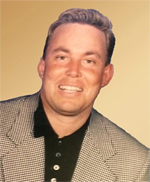
Meet Dr James Stoxen DC., FSSEMM (hon)
President, Team Doctors® Masters Academy
www.drstoxen.com
Dr Stoxen’s Curriculum Vitae
Stay connected to our thoracic outlet syndrome social media sites
1.1k
Members

READ THESE CHAPTERS OF DR STOXENS BOOK FREE HERE!
ARTICLE CATEGORIES
- Testimonials (13)
- Success Stories (13)
- Failed TOS Surgery (1)
- Thoracic Outlet Syndrome (11)
- Compartment Syndrome – Forearm (5)
- Shoulder Replacement Surgery (1)
- Cervical Discectomy (1)
- Cervical Fusion Surgery (1)
- What is TOS? (3)
- Thoracic Outlet Anatomy (1)
- Thoracic Outlet Engineering (1)
- Causes Of TOS (6)
- The TOS Examination (1)
- Diagnostic Tests for TOS (1)
- What Mimics TOS? (1)
- Paget-Schroetter Syndrome (2)
- TOS Surgery (2)
- Posture Tips (1)
- Self Treatment (1)
- What doesn’t work and why? (1)
- What works and why? (1)
- Stretches for TOS (1)
- Exercises for TOS (1)
- Surgery for TOS (1)
- Case Studies (2)
- Chapter Reviews (10)
- Uncategorized (16)
VIDEO TUTORIALS
Subscribe to our newsletter
Team Doctors® Master’s Academy
Professional Development Courses
Launching January 1, 2022!
Team Doctors® Master’s Academy
Patient Self-Care Workshops
Launching January 1, 2022!

